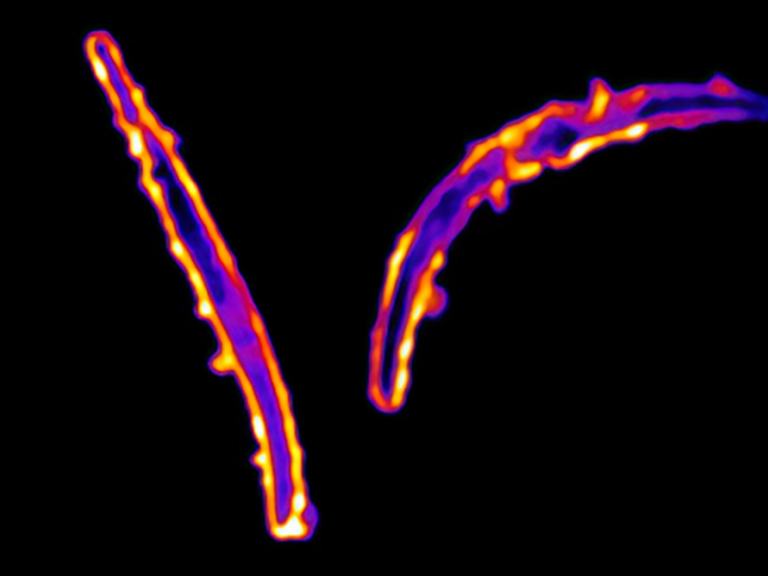Denis Voronin, Ph.D.
Staff Scientist
M.S., Biology, Novosibirsk State University, Russia
PhD, Institute of Cytology and Genetics, Novosibirsk, Russia
Denis trained as a postdoctorate fellow at Université Claude Bernard Lyon 1 and at the Liverpool School of Tropical Medicine before joining the New York Blood Center where he became Assistant Member of the Cellular Microbiology Research Program. Denis is focused on delineating the essential cellular processes that define symbiotic Wolbachia-host interactions in filarial nematodes. Elimination of the symbiont leads to death of the adult worm, rendering Wolbachia an attractive target for interventional tools to combat filariasis.
Martha Nelson, Ph.D.
Visiting Staff Scientist
B.A. Biology, Amherst College, MA
Ph.D. Biology, The Pennsylvania State University, PA
Martha was a Research Fellow and Staff Scientist at the Division of International Epidemiology and Populations Studies (DIEPS) of the Fogarty International Center. She is currently a visiting fellow in SGS to pursue her work in influenza and SARS-CoV-2 genomic epidemiology.
Yin-Ting (Tim) Yeh, Ph.D.
Visiting Scientist (Research Assistant Prof, PSU)
B.S., Engineering and System Science, and Material Science Engineering, National Tsing-Hua University, Taiwan
M.S., Chemical and Biochemical Engineering, University of Notre-Dame, IN
Ph.D., Biomedical Engineering, The Pennsylvania State University, PA
Tim is a visiting scientist in SGS. His research focuses on a combination of enhanced Raman spectroscopy, the development and application of a virus enrichment microfluidic device, and suitable deep learning algorithms to rapidly detect viruses, their antigenic variants and track genetic and antigenic evolution in real-time. This work is part of collaborations with Dr. Mauricio Terrones at PSU, and Dr. Steve Jacobson at NINDS/NIH.
Allison Roder, Ph.D.
Computational Biologist
B.S., Biotechnology and Molecular Bioscience, and Computer Science, Rochester Institute of Technology
PhD, Molecular Genetics and Microbiology, Duke University
Allison is studying the evolution of SARS-CoV-2 in populations at risk, and the host response to Influenza A and B viruses.
Matthew Chung, Ph.D.
Computational Biologist
B.S., Microbiology, G. H. Cook Scholar, Rutgers University, NJ
PhD, Molecular Microbiology and Immunology, Institute for Genome Sciences, University of Maryland Baltimore
Matt specializes in the computational analysis of genomics, metagenomics, and transcriptomics data sets in the analysis of the respiratory microbiome in COVID19 and COPD patients.
Stephanie Banakis, M.S.
Lab Manager and Biologist
B.S., Bioengineering, University of Illinois at Chicago
M.S., Biology, New York University
Stephanie studies the evolution of the Influenza virus and of SARS-CoV-2 in populations at risk.
Wei Wang, M.S.
Biologist
Bachelor of Medicine, Tongji Medical University, Wuhan, China
M.S., Microbiology, North Dakota State University, ND
Wei has over 20 years of experience in cell culture with expertise in molecular virology and vaccine research.
Joseph Koussa, Ph.D.
Post-doctoral IRTA
B.Sc., Biology, University of Ottawa, Canada
M.S., Molecular Biology, Lebanese American University, Lebanon
Joe held a faculty position at New York University Abu Dhabi where he served as an Instructor in the Division of Natural Sciences for four years.
Joe’s project revolves around host-parasite interactions in lymphatic filariasis with an emphasis on sex-dependent interactions between adult male and female parasitic worms and the host’s lymphatic endothelial cells. He has a keen interest in glycobiology of host-parasite interactions and adopts a glycocentric approach to the identification of biologically active effector parasite molecules.
Alexandra Mushegian, Ph.D.
Post-doctoral IRTA
A.B., Organismic and Evolutionary Biology, Harvard University
Ph.D., Universitat Basel, Zoology
Sasha is broadly interested in the ecology and evolution of pathogens, parasites and vectors. In the SGS lab, she is working on SARS-CoV-2. One set of questions revolves around within-host viral diversity of clinical samples and whether it can help us inform epidemiological surveillance or clinical practice. A second project is on characterizing the genomic epidemiology of SARS-CoV-2 in the Caribbean.
Abdoulie Bojang, Ph.D.
Post-doctoral Visiting IRTA (APTI)
B.Sc., Bioscience and Health, Leeds Metropolitan University, UK
M.Sc., Biomedical science, University of Hull, UK
Ph.D., Open University, UK
Higher scientific officer, Medical Research Council unit, The Gambia
Postdoctoral researcher, Medical Research Council unit, The Gambia
Abdoulie joined SGS in August 2021. His project in the SGS is to assess by metagenomics the impact of intrapartum oral azithromycin on the nasopharyngeal microbiome of Gambian infants. Oral azithromycin given during labor appears to be a promising intervention to ultimately decrease neonatal mortality and to reduce incidence of clinical infection among mother (mastitis, fever) and their babies (skin infection). However, the impact of the intervention on the nasopharyngeal microbiome of infants is not yet known.
Michael Frimpong, Ph.D.
Post-doctoral Visiting IRTA (APTI)
B.Sc., Medical Laboratory Technology, Kwame Nkrumah University of Science and Technology, Kumasi, Ghana
Ph.D., Immunity and Infectious Diseases, Kwame Nkrumah University of Science and Technology, Kumasi, Ghana
Michael joined SGS in August 2021. His research is focused on using metagenomics to understand the pathogenesis of skin neglected tropical diseases, particularly Buruli ulcer and how that information can be used to improve treatment outcomes.
Brent Edwards, B.A.
Post-bac IRTA
B.A., Biology, Middlebury College, VT
Brent is mentored by Dr. Denis Voronin and his project is focused on the intracellular bacteria Wolbachia and the mechanisms by which the bacteria interacts with its mosquito and filarial nematode hosts. Specifically, he is studying the effects of Wolbachia in mosquito cells infected with Zika virus and the molecular basis for why Wolbachia presence is associated with Zika virus suppression. A second project investigates the endosymbiotic relationship between Wolbachia and filarial nematodes to identify potential drug targets for the treatment and prevention of lymphatic filariasis.
Anil Chakravorty, B.S.
Post-bac IRTA
B.S., Integrative Biology Honors program, minor in Chemistry, University of Illinois at Urbana-Champaign, IL
Anil works with Dr. Allison Roder and investigates the gene expression profiles of host cells in response to infection with Influenza A and B. Currently, most transcriptomic analyses focus on influenza A infection, in part due to its pandemic potential; there is a paucity of information regarding host response to influenza B infection.
Christopher Mederos, B.S.
Post-bac IRTA
B.S., Biochemistry, Florida International University in Miami, FL.
Chris is working on two projects. The first, under the mentorship of Dr. Allison Roder, is to investigate the evolutionary transmission dynamics of SARS-CoV-2 and intra-host single nucleotide variants (iSNVs). The second project, under the mentorship of Dr. Joe Koussa, investigates the role of secreted lipid-binding proteins in the infection of Brugia malayi in humans.
Daniela Chow, B.S.
Post-bac IRTA (INRO)
B.S., Biological Sciences, The University of Texas at El Paso, TX
Daniela, under the mentorship of Dr. Joe Koussa, is studying the interplay of Brugia malayi with human lymphatic endothelial cells and its contribution in pathogenesis. She is also determining the role of Brugia malayi Galectin-2 (lec-2) in host-parasite interactions.
Allie Kreitman, B.A.
Post-bac IRTA (INRO)
B.A., Molecular Biology, minor in Math, Colorado College, CO
Allie’s project, under the mentorship of Dr. Sasha Mushegian, is to characterize the genomic epidemiology of SARS-CoV-2 in the Dominican Republic and Haiti. She is also comparing samples collected from symptomatic and asymptomatic individuals infected with SARS-CoV-2.
RyeAnne Ricker, B.S.
Ph.D. candidate, Biomedical Engineering, George Washington University
B.S., Biological Engineering, Montana State University, MT
B.S., Microbiology – Medical Laboratory Science, Montana State University, MT
RyeAnne worked as a microbiologist for 2 years at the Public health Labs for the State of Washington, Division of Disease Control & Health Statistics, before starting her graduate program at GWU. In her graduate research in SGS, she uses Machine Learning techniques to characterize viruses by their Raman spectrum. The aim of this work is to generate rapid methods for detection and identification of viruses as well as to better understand how a Raman fingerprint can be used to infer relationships between viruses.
RyeAnne is a National Science Foundation Fellow (2021-2024), and she has received the 2021 Terry Collins Distinguished Doctoral Award.




